Are you tired of waiting for the ice to dispense from your Samsung refrigerator?
Is your Samsung refrigerator ice maker slow dispensing and delivering those much-needed ice cubes?
Don’t worry; you’re not alone! Many Samsung refrigerator owners are facing the same problem.
But what causes this issue, and what can be done to fix it?
In this article, we’ll explore the reasons behind the slow dispensing of ice in Samsung refrigerators and provide you with practical solutions to get your ice maker working efficiently again.
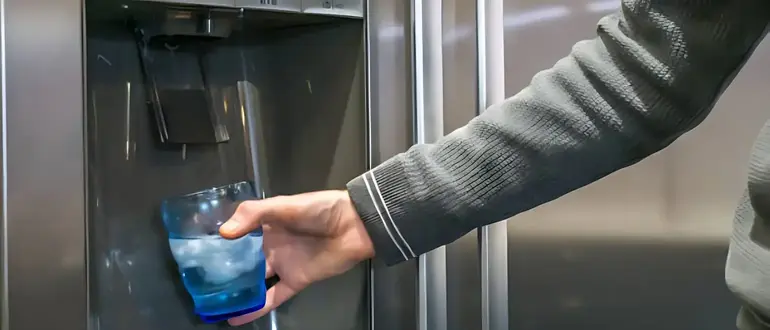
Common Causes of Slow Ice Dispensing in Samsung Refrigerators
If you have a Samsung refrigerator with an ice dispenser, you may occasionally notice that the ice is dispensing slower than usual.
This can be frustrating, especially if you need to quickly fill up a glass or pitcher.
Let’s go over some common causes of slow ice dispensing in Samsung refrigerators and what you can do to fix them.
Clogged Water Filter
Over time, the filter can become filled with sediment and other debris, which can slow down the flow of water to the ice maker. If you haven’t changed your water filter in a while, this could be the culprit.
To fix this issue, locate the water filter in your Samsung refrigerator and replace it with a new one.
You can find replacement filters at most home improvement stores or online. Make sure to follow the manufacturer’s instructions for replacing the filter.
Frozen Water Line
If the water in the line freezes, it can block the flow of water to the ice maker, resulting in slower ice production.
To fix this issue, you’ll need to thaw out the water line. Start by unplugging your refrigerator and turning off the water supply.
Then, use a hair dryer or hot towel to warm up the water line. Be patient and avoid using any sharp objects or heat sources that could damage the line.
Once the line is thawed, turn the water supply back on and plug in your refrigerator.
Faulty Water Inlet Valve
If your water filter and water line are both in good condition, the issue could be a faulty water inlet valve.
The water inlet valve controls the flow of water into the refrigerator and can become worn out over time.
To fix this issue, you’ll need to replace the water inlet valve. This can be a bit more complicated than replacing the water filter, so you may want to consider hiring a professional to do it for you.
How to Troubleshoot a Slow Ice Maker in a Samsung Refrigerator
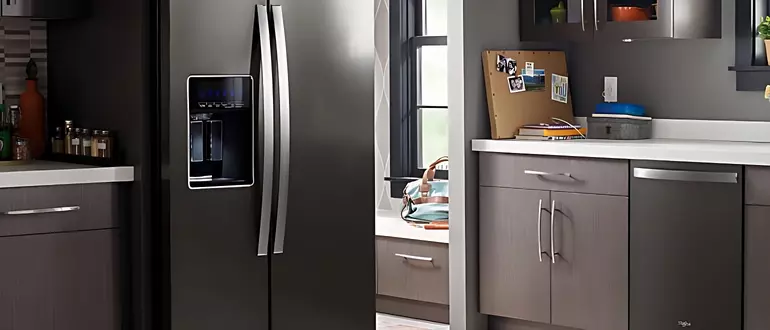
By following these steps, you should be able to troubleshoot a slow ice maker in your Samsung refrigerator and get it back up and running smoothly.
Check the Water Supply
The first thing you should check is the water supply to your refrigerator. Make sure the water valve that supplies water to your refrigerator is turned on and that the
water line isn’t kinked or clogged. If the water supply is low or the water line is blocked, it can affect the production of ice.
Check the Freezer Temperature
The next thing you should do is check the temperature of your freezer. The temperature should be set to between 0 and 5 degrees Fahrenheit (-18 to -15 degrees Celsius) for the ice maker to work properly. If the temperature is too high or too low, it can affect the production of ice.
Check the Ice Maker’s Settings
Check the settings on your ice maker to ensure that it’s set to produce enough ice. Depending on the model of your refrigerator, you may be able to adjust the ice maker’s settings to increase the production of ice.
Check the Ice Maker’s Components
If the above steps don’t solve the problem, you may need to check the ice maker’s components.
First, make sure that the ice maker’s bail wire is in the down position. If it’s in the up position, the ice maker won’t produce ice.
Next, check the ice maker’s water inlet valve to make sure it’s not clogged or malfunctioning. If the valve is clogged or malfunctioning, it can affect the production of ice.
Clean the Ice Maker
Finally, if the ice maker is still producing ice slowly, it may be dirty or clogged. You can clean the ice maker by removing the ice bin and washing it with warm water and soap.
You should also clean the ice maker’s components with a soft brush or cloth to remove any debris or buildup that may be affecting the production of ice.
Upgrading Your Samsung Refrigerator’s Ice Maker for Better Performance
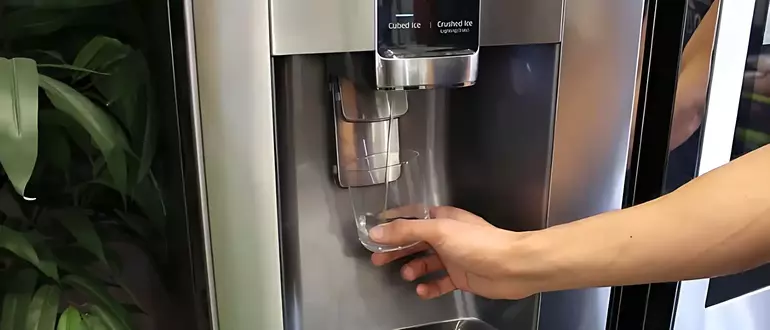
If you’re unhappy with the performance of your Samsung refrigerator’s ice maker, you may want to consider upgrading it for better performance.
Here are some steps to help you upgrade your ice maker:
Determine Compatibility
Before you purchase a new ice maker, you need to determine if it’s compatible with your Samsung refrigerator. Check your refrigerator’s manual or the manufacturer’s website for information about compatible ice makers.
Purchase the Ice Maker
Once you know which ice maker is compatible with your refrigerator, purchase it from a reputable retailer. You can buy ice makers online or at a local appliance store.
Gather Tools
To install the new ice maker, you’ll need some tools, such as a screwdriver, pliers, and a wrench. Make sure you have all the tools you need before you start the installation process.
Turn off the Power
Before you begin the installation, turn off the power to your refrigerator by unplugging it or turning off the circuit breaker that powers it. This will prevent any electrical shocks or accidents.
Remove the Old Ice Maker
Remove the old ice maker from your refrigerator by unplugging it and removing any screws or mounting brackets that hold it in place. You may need to use a screwdriver or pliers to remove some parts.
Install the New Ice Maker
Install the new ice maker by following the manufacturer’s instructions. This will typically involve attaching mounting brackets, connecting water lines, and plugging in the ice maker. Make sure you follow the instructions carefully to avoid damaging the new ice maker.
Test the New Ice Maker
Once the new ice maker is installed, turn the power back on to your refrigerator and test the new ice maker. Make sure it’s producing ice at the expected rate and that the ice cubes are the right size and shape.
Benefits of Regular Maintenance for Samsung Refrigerator Ice Makers
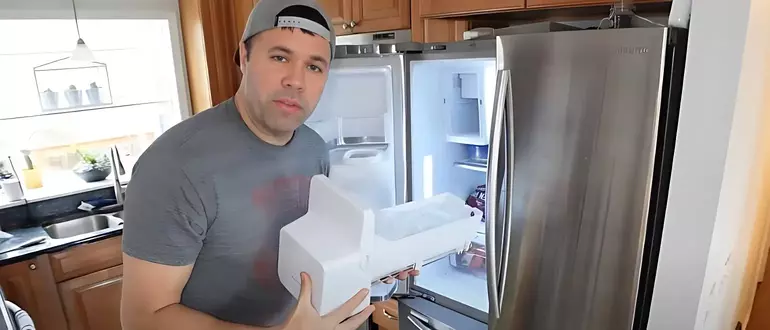
Regular maintenance of your Samsung refrigerator’s ice maker can provide several benefits, including:
Better Performance
Regular maintenance of your ice maker can ensure that it operates at peak efficiency. This can help prevent slow ice production, ice that’s too small or large, or ice that’s cloudy or discolored.
Longer Lifespan
Regular maintenance can also extend the lifespan of your ice maker. By keeping it clean and well–maintained, you can help prevent wear and tear that can lead to breakdowns or malfunctions.
Cost Savings
Regular maintenance can also save you money in the long run. By catching small problems early, you can avoid larger, more expensive repairs down the line.
You can also save money by keeping your ice maker clean and functioning properly, which can help reduce energy costs and prolong the lifespan of the unit.
Improved Food Safety
A well-maintained ice maker can also help improve food safety. By preventing the buildup of mold, bacteria, and other contaminants, you can help ensure that the ice produced by your refrigerator is clean and safe to consume.
Convenience
Finally, regular maintenance can provide you with added convenience. By keeping your ice maker functioning properly, you can avoid the hassle of slow ice production or having to replace the unit altogether.
Preventing Future Ice Maker Issues in Your Samsung Refrigerator
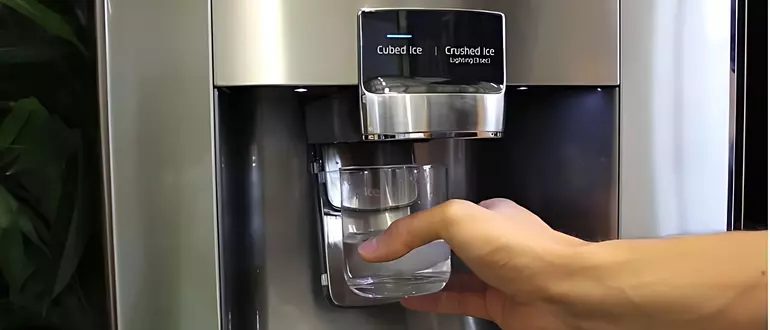
Preventing future ice maker issues in your Samsung refrigerator can help you avoid costly repairs and ensure that your ice maker functions properly.
Here are some tips to help you prevent future ice maker issues:
Change the Water Filter
Changing the water filter regularly is one of the most important things you can do to prevent ice maker issues. A clogged or dirty water filter can affect the quality and quantity of ice produced by your refrigerator.
Keep the Freezer Temperature Consistent
Maintaining a consistent temperature in your freezer can also help prevent ice maker issues.
Make sure your freezer is set to the recommended temperature range and avoid opening the door too frequently, as this can cause fluctuations in temperature.
Clean the Ice Maker Regularly
Regularly cleaning your ice maker can help prevent the buildup of mold, bacteria, and other contaminants.
Follow the manufacturer’s instructions for cleaning your ice maker and make sure to clean it at least once every six months.
Check the Water Line for Leaks
Periodically checking the water line for leaks can also help prevent ice maker issues. Look for signs of water damage or moisture around the water line, and make sure the line is properly connected and not kinked.
Avoid Overfilling the Ice Bin
Overfilling the ice bin can cause the ice maker to malfunction. Make sure to only fill the ice bin to the recommended level, and avoid jamming or forcing ice cubes into the bin.
FAQs
How Often Should I Change The Water Filter In My Samsung Refrigerator’s Ice Maker?
It’s recommended to change the water filter in your Samsung refrigerator’s ice maker every six months or when the filter indicator light comes on, whichever comes first.
Can I Replace My Samsung Refrigerator’s Ice Maker With A Newer Model For Better Performance?
Yes, you can replace your Samsung refrigerator’s ice maker with a newer model for better performance. Make sure to check the compatibility of the new ice maker with your refrigerator before making the purchase.
How Can I Prevent Future Ice Maker Issues In My Samsung Refrigerator?
Regular maintenance is key to preventing future ice maker issues in your Samsung refrigerator. This includes changing the water filter regularly, keeping the freezer temperature consistent, cleaning the ice maker regularly, checking the water line for leaks, and avoiding overfilling the ice bin.
Final Words
A slow–dispensing ice maker in a Samsung refrigerator can be an annoying problem that can affect your daily routine. However, with the information and solutions
provided in this article, you can easily identify the cause of the issue and resolve it efficiently. From checking the water pressure to replacing the water filter, there are
various ways to fix a slow dispensing ice maker in your Samsung refrigerator. By following the expert recommendations and implementing the solutions we have
discussed, you can ensure that your ice maker dispenses ice efficiently and effectively. We hope this article has been helpful in providing you with the
information you need to solve this common problem and enjoy a refreshing glass of ice-cold water or your favorite beverage whenever you want!
